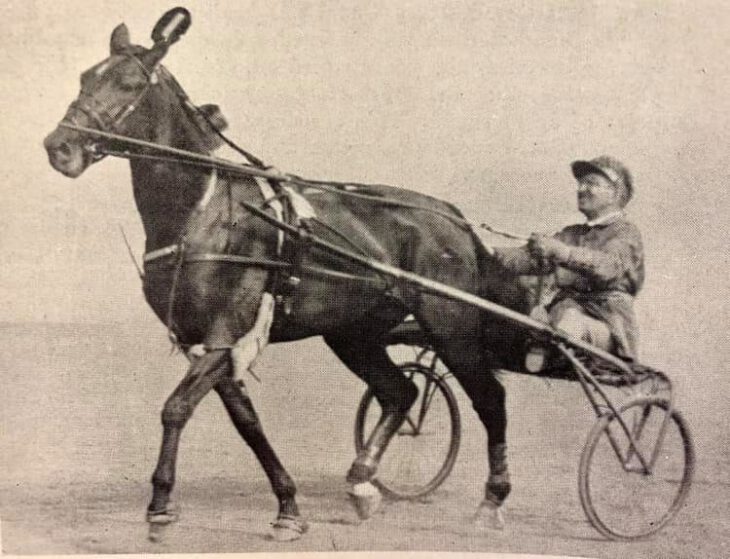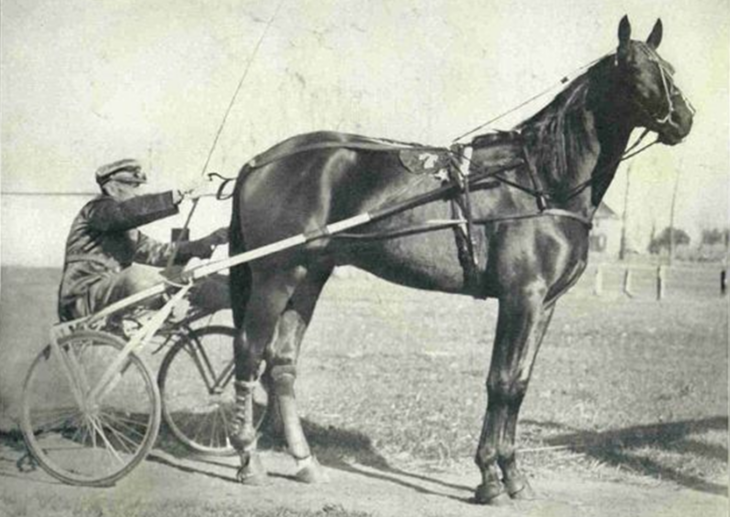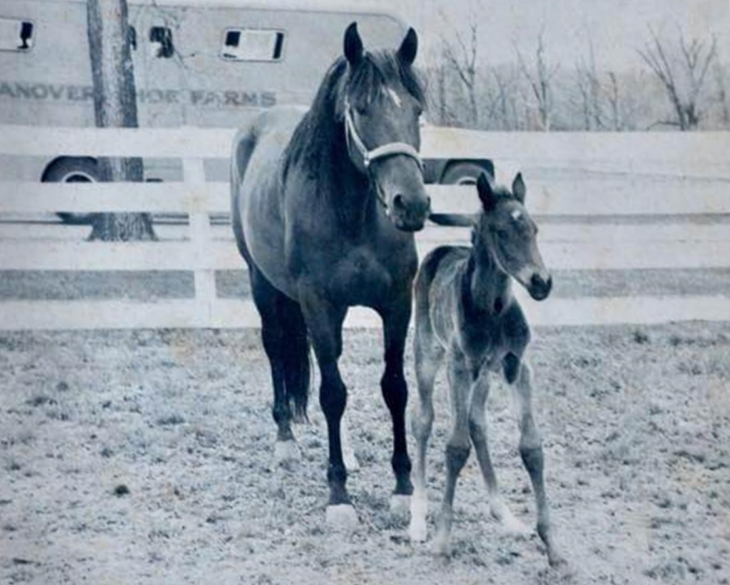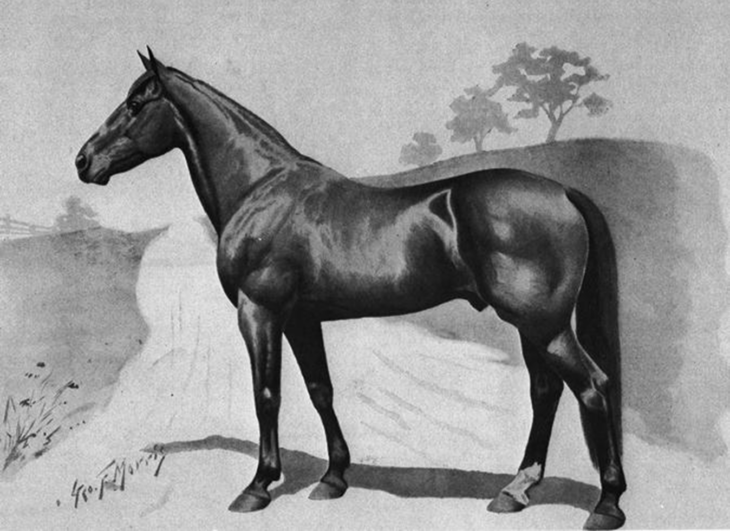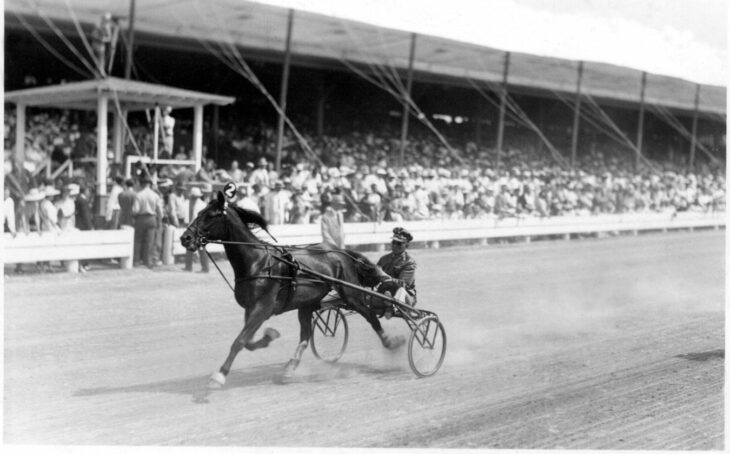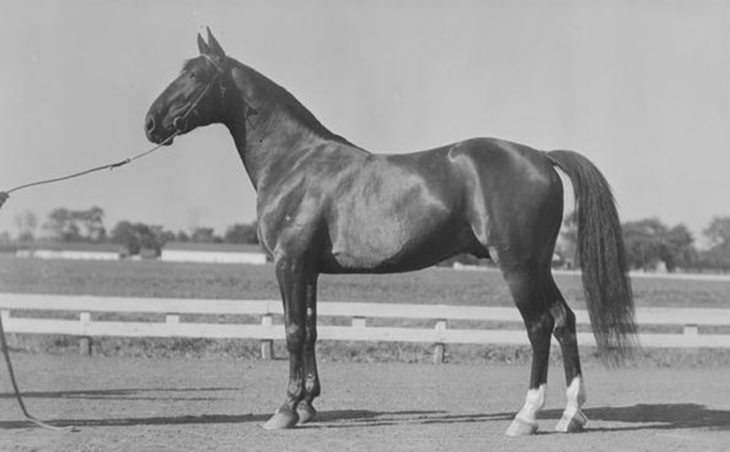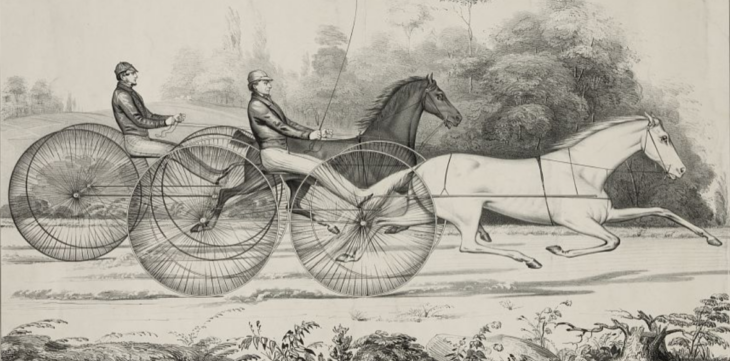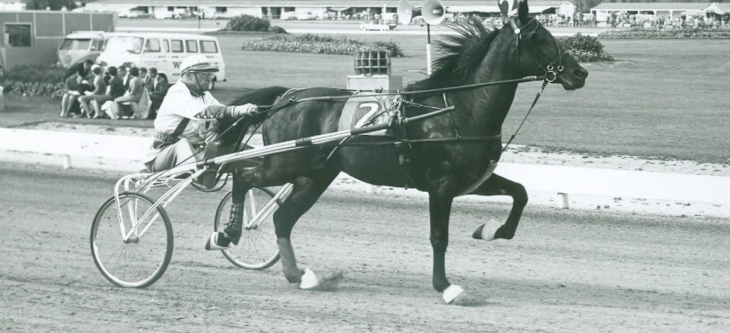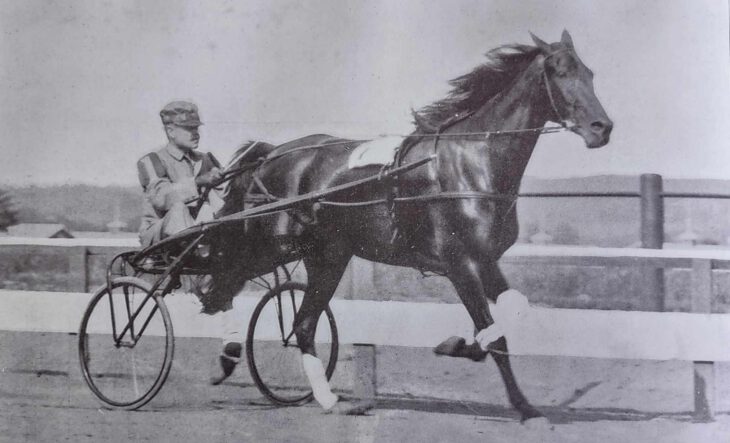He was designated as a wedding gift to circumvent export restrictions after WWII, then caused despair when he refused to train. In stepped Count Orsi Mangelli to restore Mighty Ned’s career, starting a fantastic turnaround that lead to two Prix d’Amerique-wins and a reputation as one of the best American imports in Europe ever.
Read MoreUSA
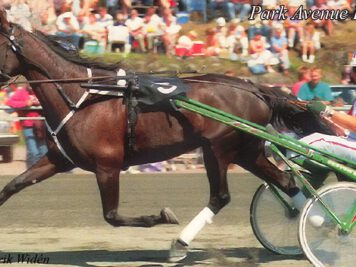
The queen’s terrible demise
She was a really good youngster in the US, winning the Hambletonian Oaks and Kentucky Futurity filly, and blossomed into one of...
Read More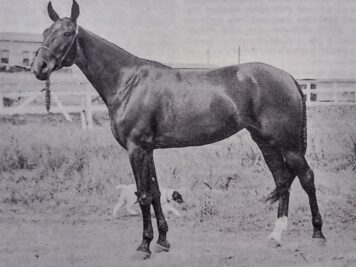
The game superstar who raced herself to death
She was on her way to possibly becoming one of the best trotters in history when tragedy struck. The tale of Sadie Mac is one a...
Read More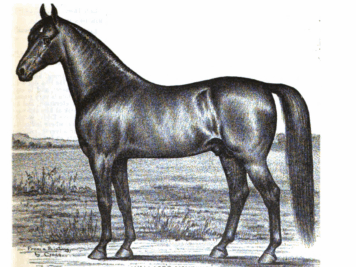
The great horse of San Mateo (and the Captain’s mare)
She was one of the most famous trotters around the time Hambletonian was born, but we don’t even know her name. In the mid...
Read More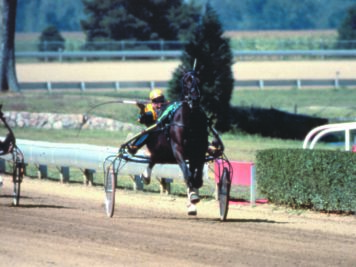
The terror
In the case of Nevele Pride, it is not only the horse that is legendary, but also his temperament. For every great race-related...
Read More
The last Yankee superstar
He was the last superstar trotter bred by Yankeeland Farms, the legendary Maryland-based farm that closed its doors in 2006...
Read More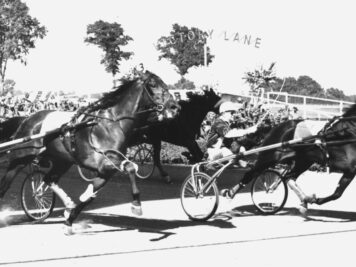
The juvenile delinquent
The third horse to win the trotting’s Triple Crown, Ayres, was always an great talent, but at 2 there were question marks...
Read MoreThe expression “Who’s your daddy?” is often used as a claim of dominance. In the case of the 1938 foals of Gäel, a champion French trotter, it is more a matter of facts than dominance. Though he officially never sired a single foal in France, it is now common knowledge operated in the shadows at Haras de Ginai and produced several top French trotters.
Read MoreYou have horses with great pedigrees, then you have those really blue-blooded horses … and then there is Florestan. Despite being a son of the world’s best stallion at the time and possibly the best race mare in history, the brown colt was effectively stateless and a bit of an outcast in his time. The French changed their mind about him, though, and gave him the chance at stud, a move which started the French trotting revolution.
Read MoreIt’s a story full improbable twists, cruel treatment and bizarre facts. What ended up as Hambletonian’s possibly greatest son at stud was in fact an alcoholic and named for the shadiest of writers who “reviewed” brothels in the name of journalism… It is said that cream always rises to the top. George Wilkes, the stallion who changed how trotters moved their hind legs and the paternal great-grandsire of Axworthy, started at the bottom but rose to the top.
Read MoreHaving won the Hambletonian twice, in 1930 with Hanover’s Bertha and 1937 with Shirley Hanover, the Hanover Shoe Farms’ Lawrence Sheppard had no obvious Hambletonian candidate in 1938. However, he got the success he wanted when he bought the winner shortly before the big race. McLin Hanover turned out to be a spectacular trotter – in fact so good he had to leave the continent.
Read MoreHis whole life is spectacular. He was the best trotter in his generation, even though his trainer was skeptical and at 2 felt the horse should be gelded and turned out. His stallion performance was equally fantastic and the events surrounding his death has become the stuff of legends.
Read MoreKnown as the “The Queen of the Turf”, she was the first to break the magic 2:30 barrier. A victim of bad and harsh treatment on many occasions, Lady Suffolk never sulked or quit.
Read MoreAn exceptional racehorse at 2, BF Coaltown was then set back by virus infection a month ahead of hte Hambletonian which he seemingly never really recovered from. The Ohio-born stallion went on to exceed all expectations at stud when he became one of the best stallions ever seen in his home state.
Read MoreWidely expected to be one of the first 2:00 trotters, Axworthy’s most spectacular daughter was nearly invincible at her best. The fastest mare in history at that point, she passed early and has largely slipped into oblivion. Hamburg Belle’s legacy deserves much better, however.
Read MoreHe had been a really good trotter in Europe and moved with his trainer to the US. At first some questioned if an 8-year-old European trotter they barely had heard of could compete with the best North Americans. But, as the trotting world quickly realized, the question was rather how the best North Americans could compete with the European speed demon. As it turned out, when Sebastian K was at his best, they simply didn’t stand a chance.
Read More
